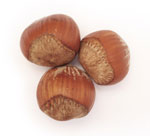Non-Insulin management of geriatric patients having Type 2 Diabetes Mellitus: A Review
Posted by: admin on: January 27, 2012
With India becoming the diabetic capital we need to know how to manage our elderly diabetic patients. Choice of hypoglycemic agents in geriatric patients needs to be individualized says a review.
Team@CMHF
BACKGROUND: Currently, 42% of the US population with diabetes is aged ≥65 years.
OBJECTIVE: The aim of this review was to discuss the efficacy and tolerability of noninsulin therapies for type 2 diabetes mellitus (T2DM), with an emphasis on patients aged ≥65 years.
METHODS: PubMed and EMBASE (1977-2010) were searched using the terms geriatric, elderly patients, type 2 diabetes mellitus, metformin, secretagogues, thiazolidinediones (TZDs), alpha-glucosidase inhibitors, dipeptidyl peptidase-4 (DPP-4) inhibitors, and glucagon-like peptide-1 (GLP-1) receptor agonists. Articles were included if they were clinical trials, reviews, or meta-analyses.
RESULTS: More than 10 classes of noninsulin treatments are available for T2DM. However, most treatments have been evaluated only in trials in patients aged<65 years, and trials in older populations are scarce. Therefore, health care providers should consider the overall benefit to risk, with a focus on risk factors in older patients. A1C reductions range from 0.6% to 2%, with similar decreases observed for metformin, TZDs, sulfonylureas (SUs), glinides, and GLP-1 receptor agonists Treatment-associated adverse events vary. The prevalence of hypoglycemia is high with the secretagogues, SUs, and glinides). The TZDs have been associated with an increased risk for heart failure co mpared with the other oral therapies. Gastrointestinal adverse events have been commonly reported with metformin, which is contraindicated in cases of renal insufficiency. Use of the GLP-1 RAs liraglutide and exenatide have been associated with comparable weight reductions of ∼3 kg and with a low risk for hypoglycemia). Treatment with the GLP-1 RAs has been associated with transient gastrointestinal reactions, mainly nausea. CONCLUSIONS: The selection of noninsulin treatments in older patients with T2DM should be individualized based on patient assessment and on careful evaluation of the potential benefits (glycemic and extraglycemic) and risks (ie, hypoglycemia, weight gain, cardiovascular risks). More clinical trials in older patients, especially those aged ≥65 years, with T2DM are needed.
Search
- drchasrani: Difficult to get such a data, authenticated at that. Try Times of India online library
- rakesh pore: hi, where can i get genuine information about "10 most common drugs sold in india?" i want it for a local project
- nilesh dutta: sir, Plz give detail about MBA Sports Management Thanks and Regards


Leave a Reply